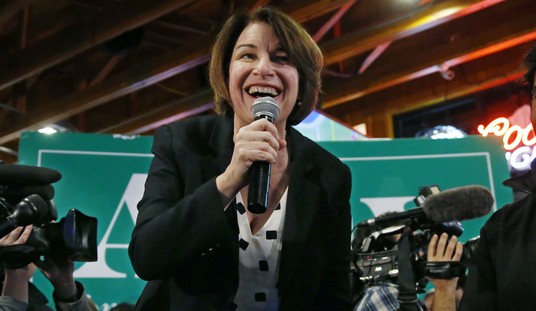
Today I’m introducing a quick-and-dirty metric for examining the state of play in the Senate races: the Senate Breakers Report.
As I explained eleven days ago, the history of the last six Senate election cycles shows that the final results can and do differ from where the polls stand in mid-September, and the strong tendency has been for the final results to move in the direction of the “wave” party, i.e., the same party that is doing well in the generic House ballot polls and the presidential approval rating polls. Sean Trende’s latest analysis builds on that (“candidates who have led by five points (rounded) or less have won only 15 of the 33 races in which they have been involved”) and develops the theory that he has been examining for much of the year: that the Democrats’ performance in Senate races would ultimately converge around President Obama’s approval rating in those states, which of course is dismal in all but the bluest states. At this writing, Obama is 12 points underwater nationally (41.4 to 53.5) and Republicans – driven in part by more pollsters switching from registered to likely voter screens – have taken off in the generic ballot, pulling ahead to a 4-point lead (46.5 to 42.5).

Trende’s specific thesis has been that the reason the results diverge from the polls in the final four to six weeks in an election of this nature – i.e., a midterm where the President is unpopular – is that the Democrats have consolidated the voters who approve of President Obama, leaving them with a pool of anywhere from 10-20% of the electorate that is undecided in the Senate race but overwhelmingly consists of voters who disapprove of the president and are therefore likely (to the extent they vote at all) to vote for the opposition party. We don’t know if this will happen, but it’s the recent-historic trend. And if you drill into the polling, you can see some signs of it – consider PPP’s polling in Alaska in August and September:

Mark Begich’s positive job approval numbers sank between those two polls – to converge in the direction of Obama’s deep unpopularity in Alaska. Just to take PPP as an example, its latest polls had Obama’s approval rating at 45-50 in Virginia, 31-62 in Arkansas, 40-56 in Alaska, 33-58 in Kansas, and 42-53 in North Carolina, and all those races besides Kansas – even Virginia, where Mark Warner still has a solid lead – trending away from the Democrats.
Without further ado, then, here is where the RCP averages currently stand for each of the contested Senate races, in a chart I call the “Senate Breakers Report” because it illustrates how many of the remaining undecided voters need to break Republican to win those races. The R2% column shows the Republican’s current percentage of the two-party vote (the only metric that matters); IU% is the percentage of the polled electorate that is either undecided or currently backing a third party candidate (despite Robert Sarvis’ presence in the Virginia race, there is really only a major third party factor in South Dakota, where former Republican Senator Larry Pressler gets double-digit support, but that race is not close); and “R to 50” shows what percent of the undecided/independent vote the Republican needs to get to 50.001% of the vote and win.

Of course, this is an unduly reductionist approach – some voters who are now committed may change their minds, and we don’t know yet how accurately the polls are modeling the actual electorate. All of these things go into my original point that things can change from mid-September polls to final election results. But if you’re trying to figure out how much give is in the polls, this is a good quick look. Only two races, New Hampshire and Minnesota, show less than 10% of the voters undecided, which means that there’s still a lot of work to be done by both sides to nail down a win. But despite the relative tightness of those races, pretty much every race above Arkansas on the chart requires the GOP candidate to capture less than 40% of the remaining undecided voters, not that challenging a haul when no more than a quarter to a third of those undecideds, in many states, are happy with the president. The further down the chart you go, the harder the sledding gets – the polls in Kansas are not really settled yet, but if you take them at face value, Pat Roberts simply has to shake some of Greg Orman’s current supporters away to win, whereas neither Terri Lynn Land nor Thom Tillis has to do that. That said, we can see the trend towards Republicans even in places like Virginia and Oregon that look pretty well locked up for the Democrats.
It’s not over, and a lot of these races will be close to the end. But the closing arguments will have to focus on voters who disapprove of President Obama, and I’d rather have the Republican side of that argument than the Democrats’ side.













Join the conversation as a VIP Member